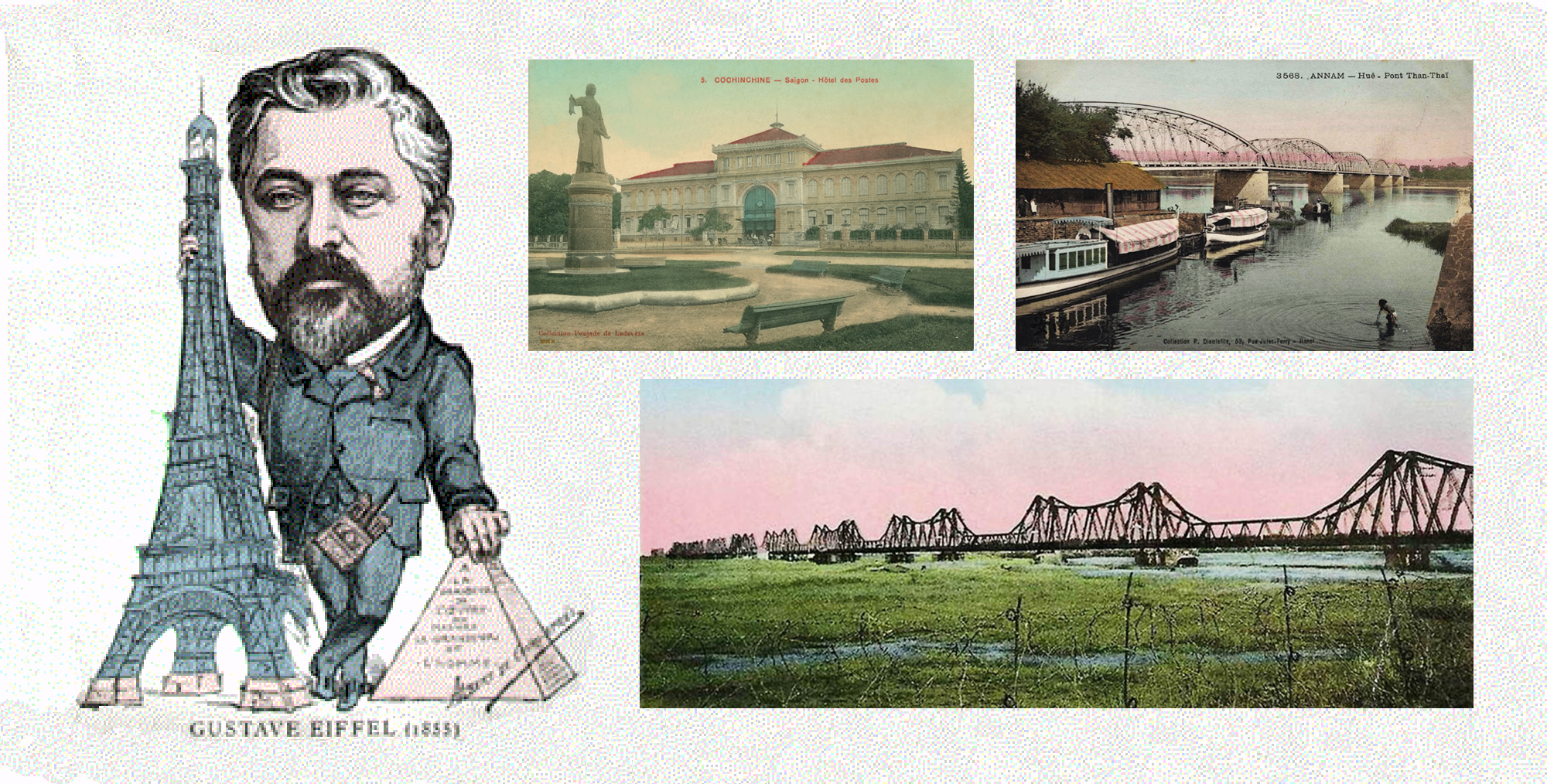
Foreign visitors to Việt Nam are often told erroneously that the Long Biên Bridge in Hà Nội, the Trường Tiền Bridge in Huế, and the Saigon Post Office are works by Gustave Eiffel. They are not.
For several years, Vietnamese and foreign historians alike have been frustrated by the amount of misinformation circulated regarding certain heritage structures in Việt Nam, the three best-known examples being the claims that Gustav Eiffel designed and built (i) the Long Biên Bridge in Hà Nội, (iii) the Trường Tiền Bridge in Huế, and (iii) the Saigon Post Office.
Apart from being incorrect, these claims do great disservice to the skills of Cochinchine Chief architect Marie-Alfred Foulhoux, Établissements Daydé et Pillé and Établissements Schneider et Letellier, the real authors of these three works.
The stories about the Long Biên Bridge in Hà Nội, and the Trường Tiền Bridge in Huế are not difficult to disprove, thanks to the wealth of documentary evidence:
Long Biên Bridge, Hà Nội
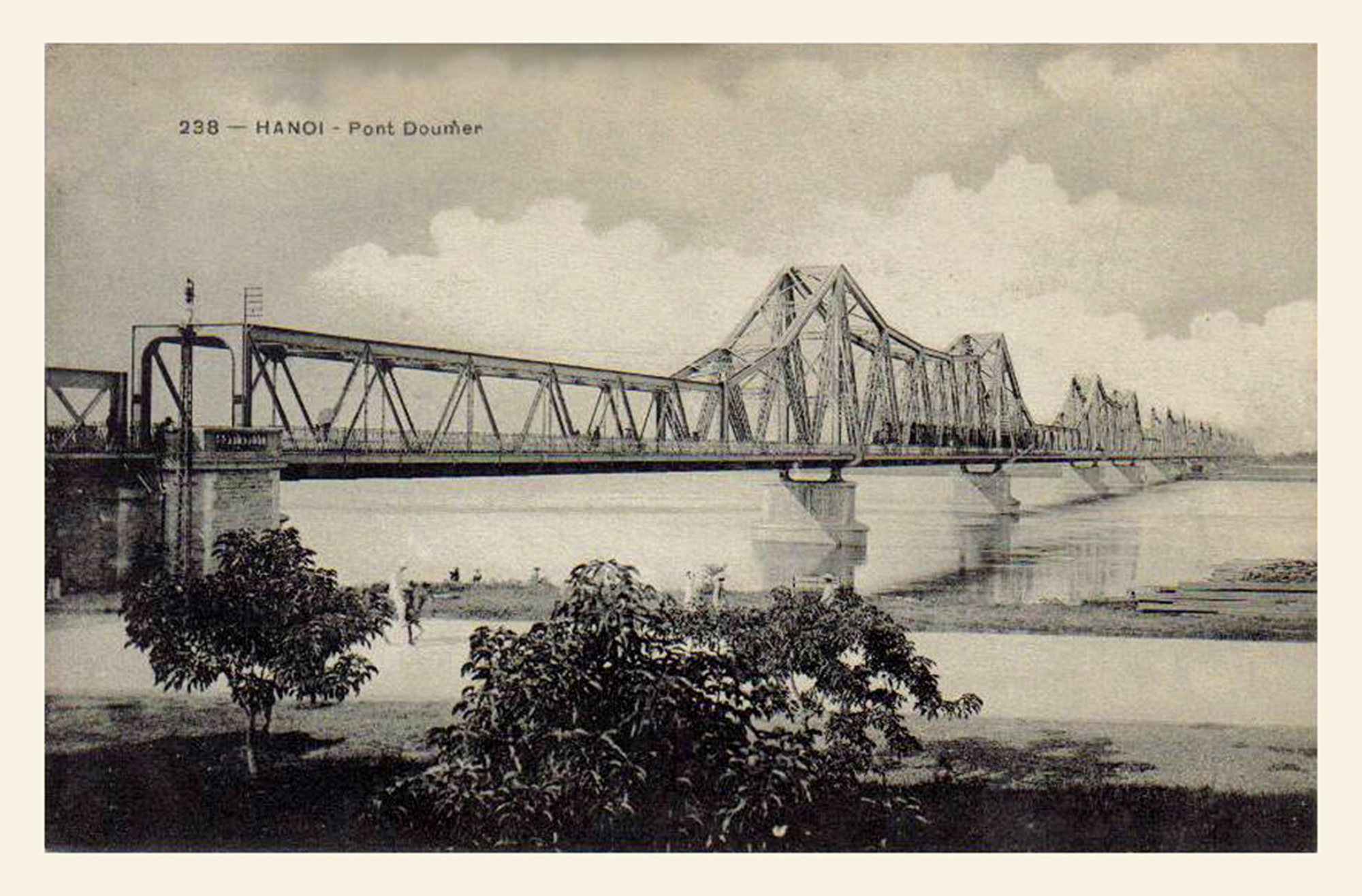
Tonkin – Hà Nội – Pont Doumer (today the Long Biên Bridge)
Some tourism training materials being circulated in Hà Nội still include the claim: “Cầu Long Biên được xây dựng từ ngày 12/8/1898, hoàn thành vào ngày 3/2/1902; do kiến trúc sư người Pháp Ep-phen thiết kế; dài 2290 m, cao 17m, nặng 17 nghìn tấn” (Long Biên Bridge was built from 12/8/1898 and completed on 3/2/1902; designed by French architect Eiffel; 2290 m long, 17m high, weight 17,000 tonnes).
However, the following documents, plus the prominently-displayed manufacturers’ plates on the bridge itself, show clearly that the bridge – actually measuring 1,680m in length – was designed and constructed by Daydé et Pillé, a company which was selected in an adjudication involving numerous major construction companies, the Eiffel successor company Société de construction de Levallois-Perret being one of the unsuccessful ones.
Please click on the titles at the end of each passage to view the original documents:
“Au concours ouvert, en 1897, pour la construction du pont d’Hanoï, se présentèrent les principales maisons de construction de France. Le projet de la maison Daydé et Pillé, de Creil (Oise) fut choisi” (At the open competition of 1897 for the construction of the Hà Nội bridge, the main construction firms in France were presented. The project by Daydé et Pillé, from Creil (Oise), was chosen). Paul Doumer, L’Indo-Chine française, souvenirs, Paris, 1905
“Ce pont, que l’on appelle « pont Doumer », du nom de l’ancien gouverneur de. l’Indo-Chine, a été construit de 1898 à 1902, par MM. Daydé et Pillé, à la suite d’un concours auquel toutes les grandes maisons de construction avaient été appelées à prendre part” (This bridge, which is named the “Doumer Bridge” after the former Governor of Indo-China, was built from 1898 to 1902 by MM. Daydé and Pillé, following a competition in which all the major construction companies had been invited to take part). Le Génie civil: revue générale des industries françaises et étrangères, Paris, 1909-04-03
“Le pont construit par MM. Daydé et Pillé s’arrête en effet au bord extérieur de la chaussée de la digue. Ce sont les Travaux Publics qui ont construit la partie du pont qui enjambe le Quai Clemenceau, la rampe d’accès actuelle, la plate-forme de la gare (qui n’a jamais été construite) et le reste du viaduc jusqu’à l’Avenue Bichot” (The bridge built by MM. Daydé and Pillé, indeed stops at the outer edge of the causeway of the dike. It was the Public Works Department which built the part of the bridge that spans Quai Clemenceau, the current access ramp, the station platform (which was never built) and the rest of the viaduct which extends up to the avenue Bichot). L’Éveil économique de l’Indochine: bulletin hebdomadaire, Hanoï, 1923-11-23
This company was also responsible for constructing 98 large metallic bridges on the Hà Nội-Vinh railway line during the period 1902-1905, including the famous Hàm Rồng Bridge in Thanh Hóa.
http://entreprises-coloniales.fr/inde-indochine/Dayde-Indo-Chine.pdf
Perhaps the confusion here occurred because Daydé et Pillé was one of several companies which eventually merged with Eiffel to form Eiffage métal, however that would not take place until 1964 – see https://fr.wikipedia.org/wiki/Eiffage_Métal
In his book Hanoi’s Architecture in the Nineteenth and Twentieth Centuries (NXB Xây dựng 1985), Đặng Thái Hoàng claimed that the bridge was built to an Eiffel company blueprint, but this claim cannot be substantiated.
Trường Tiền Bridge, Huế
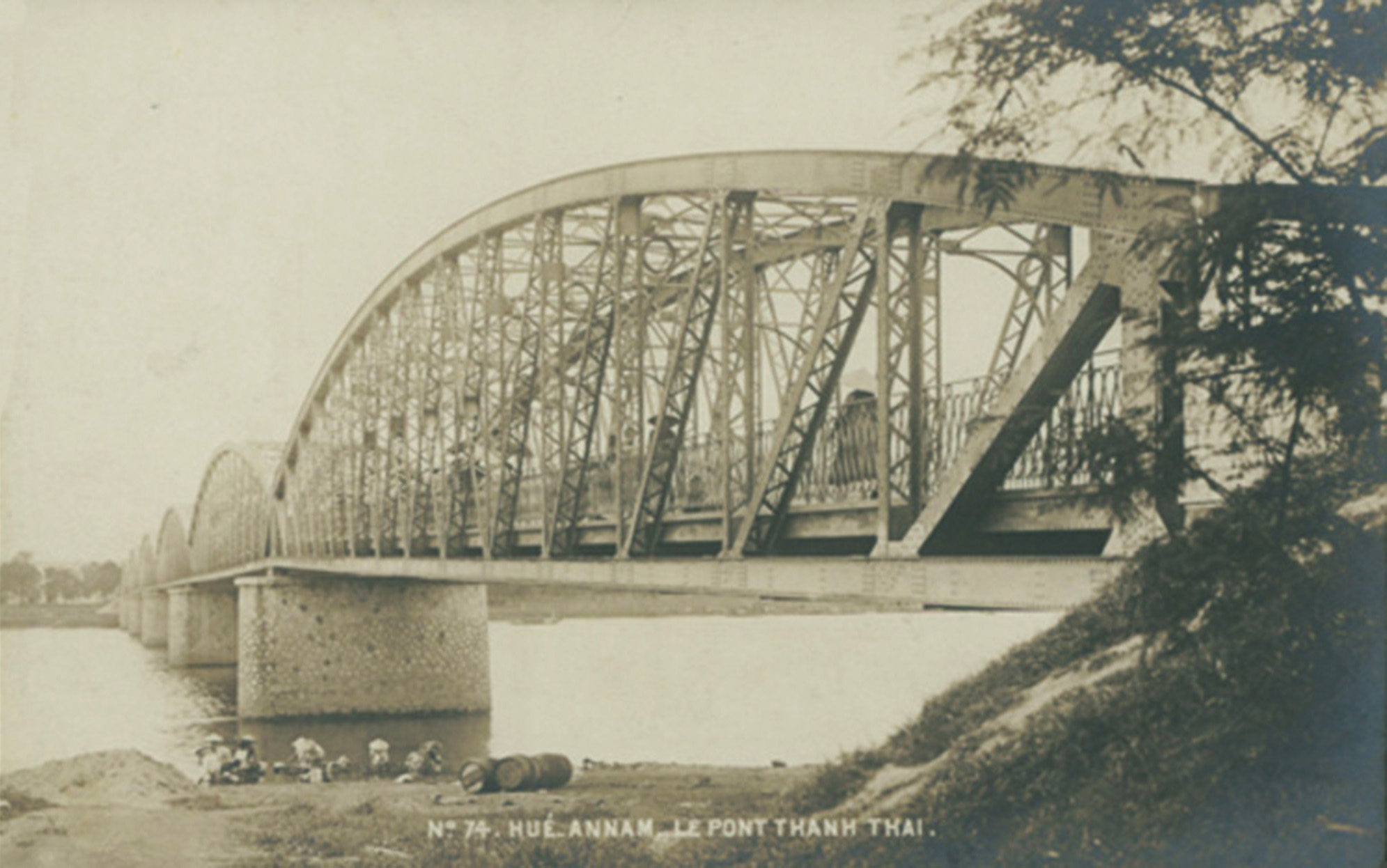
Annam – Huế – Le Pont Thành-Thái (today the Trường Tiền Bridge)
A number of tourism training documents used in Huế claim that “Năm Thành Thái thứ 9 (1897), chiếc cầu trên được nhà cầm quyền Pháp (khi ấy Khâm xứ Trung Kỳ là Levecque) giao cho hãng Eiffel (Pháp) thiết kế (do Gustave Eiffel thiết kế) và xây dựng lại bằng sắt, đến năm Thành Thái thứ 11 (1899) thì hoàn thành và được mang tên vị vua này” (In the 9th year of Emperor Thành Thái (1897), the bridge was assigned to the Eiffel Company (designed by Gustave Eiffel) and rebuilt with iron by the French authorities (at that time the Résident Supérieur of Annam was Levecque), construction continued until the 11th year of Emperor Thành Thái (1899), when it was completed and named after this king).
However, the following French documents show that this bridge was actually designed and constructed by Schneider et Letellier (Société Schneider et Cie and Cie de Letellier) and that it was not completed until 1901:
“Vu le programme et cahier des charges de l’adjudication sur concours, pour la construction d’un pont métallique sur la rivière de Hué, approuvé le 26 mai 1897; Vu le projet déposé par la Société Schneider et Cie et Letellier, représentée par M. Dessoliers, ingénieur à Hanoi…” (With regard to the program and specifications of the competitive bidding for the construction of a metal bridge over the Huế river, approved on 26 May 1897; With regard to the project submitted by the Société Schneider et Cie et Letellier, represented by M. Dessoliers, engineer in Hà Nội). Bulletin officiel de l’Indochine française, Saïgon et Hanoï, 1897-11
“Le pont de Hué: Un concours, basé sur ce programme, fut ouvert, en mai 1897, entre les constructeurs français. Le projet présenté par MM. Schneider et Cie et Letellier fut jugé supérieur à celui des autres concurrents, et le pont fut adjugé le 23 novembre 1897. Le montant des dépenses autorisées fut fixé à 723.926.50 francs.” (The Huế Bridge: A competition, based on this program, was opened in May 1897 between French builders. The project presented by MM. Schneider et Cie et Letellier was deemed superior to that of the other competitors, and the bridge construction was awarded to them on 23 November 1897. The amount of authorised expenditure was set at 723,926.50 francs). Paul Doumer, Situation de l’Indochine française de 1897 à 1901, 1901
“Les sieurs Schneider et Letellier ont reçu, le 18 oct. 1901, notification d’un ordre de service les invitant à se présenter dans les bureaux du premier arrondissement du service des travaux publics à Hanoï pour y prendre connaissance du décompte définitif des travaux du pont de Hué et à le signer pour acceptation” (Messieurs Schneider and Letellier received, on 18 October 1901, notification of a service order inviting them to come to the offices of the first district of the Public Works Department in Hà Nội to take note of the final account of the work on the bridge in Huế and to sign it for acceptance). Recueil des arrêts du Conseil d’État, Paris, 1908
The Schneider company, originally from Le Creusot (Saône-et-Loire), also built numerous large metallic bridges for the CFI Hà Nội-Vinh and CIY Hải Phòng-Hà Nội-Việt Trì railway lines, and would later give birth to the modern Schneider Electric.
Saigon Post Office
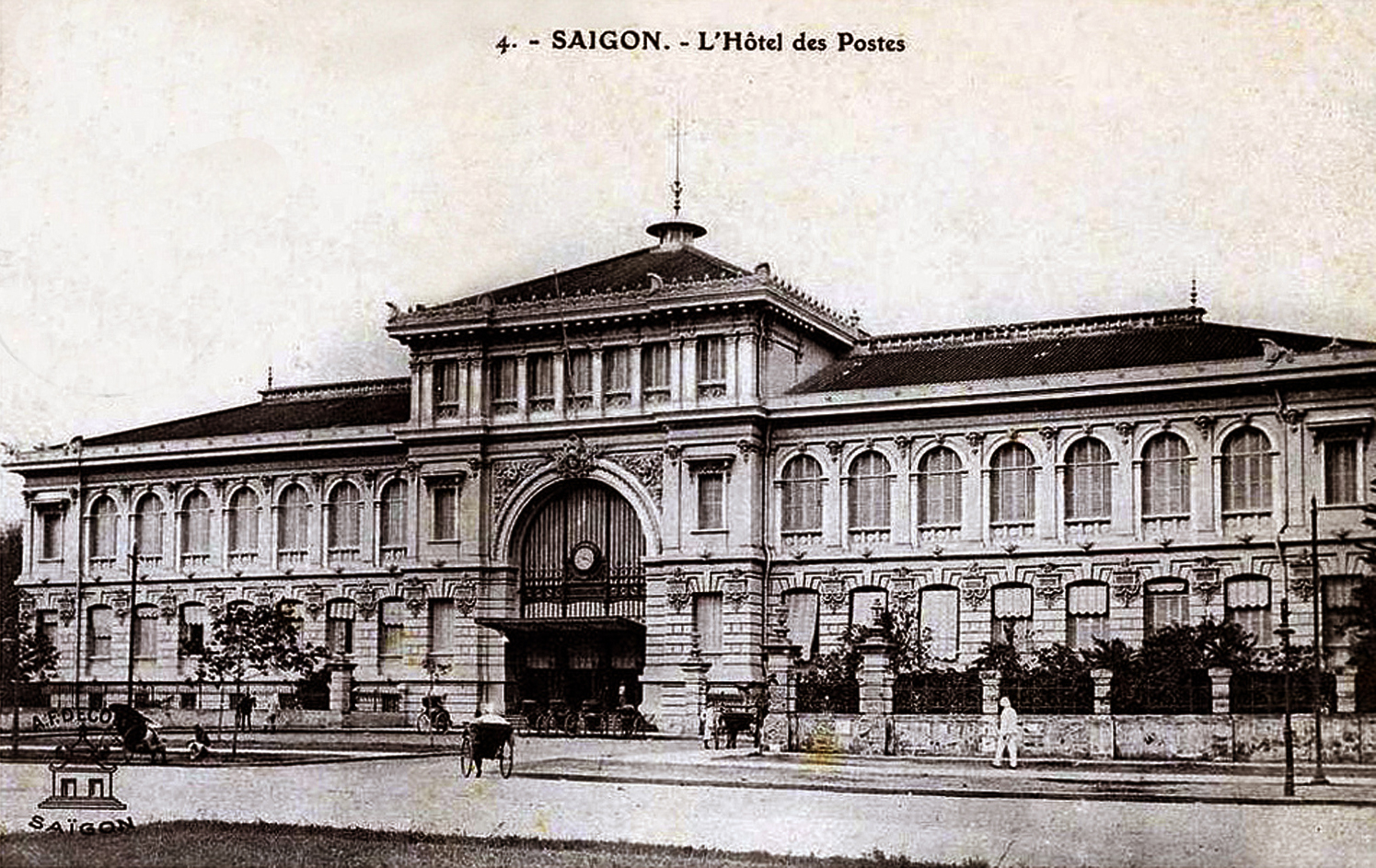
Saigon – L’Hôtel des Postes (Saigon Post Office)
Every year, millions of foreign guests visiting this high-profile building are informed by tour guides that it is “a work by Gustave Eiffel.” While the history of Saigon Post Office is less well documented than the two bridges mentioned above, available sources clearly indicate otherwise.
The “Eiffel Post Office” story is believed to have come originally from a document entitled “Hướng dẫn thuyết minh về các địa điểm tham quan trong thành phố” (Guidance notes about places to visit in the city), which was circulated in 1990 by the Sở Ngoại Vụ Thành phố Hồ Chí Minh to all tourist and other agencies dealing with foreign visitors. This document included the following advice: “Nhà BĐTP là do kỹ sư Guy-xta-vơ Ép-phen – Pháp – thiết kế và chỉ đạo xây dựng từ năm 1887-1891 thì hoàn thành theo phong cách chiết trung” (The Saigon Post Office is by French engineer Gustave Eiffel, who designed it and directed its construction from 1887-1891 in an eclectic style).
Today, the myth of the “Eiffel Post Office” is still taught to many tour guides, despite the fact that all the available historical data proves the claim to be erroneous.
Eiffel in Indochina
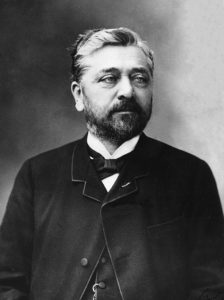
Gustave Eiffel, Ingénieur français (1832-1923), photo de Nadar ©MP/Leemage
According to Laurent Weill’s article “l’Entreprise Eiffel et la mise en valeur de l’Indochine, 1889-1965,” originally published in Histoire, économie & société, Année 1995, 14-2, the Eiffel company was founded in 1863 by Gustave Eiffel under the company name Gustave Eiffel et Cie, and established an office in Cochinchina in 1872:
The official lists of Eiffel’s works prepared by the Association des Descendants de Gustave Eiffel at www.gustaveeiffel.com/ show that, while the vast majority of the company’s achievements were located in France, it was also commissioned to build numerous structures in Cochinchina between 1872 and 1889.
These included, amongst others, railway bridges (Bình Điền, Tân An and Bến Lức viaducts on the Saigon-Mỹ Tho railway line), road bridges (Pont des Messageries maritimes, Pont de Cholon/Pont des Malabars, Pont de Ông Núi, Pont de Rạch Lăng, Pont de Bình Tây, Pont de Rạch Gia, Pont de Long Xuyên), markets (Long Châu, Cao Lãnh, Ô Môn, Tân Quy Đông and Tân An), filter wells and canal/creek towpaths, as well as the imposing headquarters of the Halles des Messageries fluviales on the Saïgon riverfront – see https://gustaveeiffel.com/ses-oeuvres/asie/
By 1889, the year in which Eiffel built his world-famous Eiffel Tower for the 1889 Universal Exposition in Paris, the company had offices in Saigon, Shanghai, Lisbon, Saint Petersburg and Buenos Aires, and representatives in Madrid and Naples. On 21 May 1890, the Cie des Établissements Eiffel was created, of which Gustave Eiffel controlled more than 50% of the capital (i.e. 4,643,068 francs).
However, in 1891-1893, Eiffel’s fortunes changed drastically, as his Paris Metro plan “Projet Eiffel de Métropolitain” was rejected by the Paris municipal authorities, and he himself became implicated in the financial and political scandal surrounding the failed French project to build a canal across the Panama Isthmus. Indicted in November 1892 in connection with the Panama scandal, Eiffel resigned from the board of directors on 10 January 1893. Eiffel then refused to permit the company to continue bearing his name, so a new board of directors was appointed and the company formally changed its name the Société de Constructions de Levallois-Perret (SCLP).
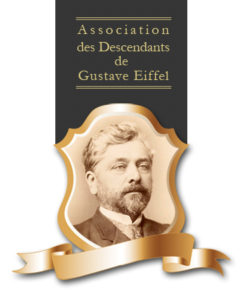
The Association des Descendants de Gustave Eiffel has prepared a comprehensive list of all of Eiffel’s works at www.gustaveeiffel.com/
The Eiffel successor company Société Constructions Levallois-Perret continued to play an important role in the development of the French colony, building much of Saïgon’s port infrastructure as well as a large number of the bridges on the North-South (Transindochinois) railway line. Eventually in 1937, confident that its founder’s reputation could no longer be dented by memories of the Panama scandal, the company changed its name to Société des Anciens Établissements Eiffel (SAEE) – see www.entreprises-coloniales.fr/inde-indochine/Eiffel-Indochine.pdf
Although the Maison Eiffel was responsible for numerous works in Cochinchina, its involvement in the design or construction of the Saigon Post Office is not mentioned anywhere in the official lists of Eiffel’s works prepared by the Association des Descendants de Gustave Eiffel – see https://gustaveeiffel.com/ses-oeuvres/asie/
Neither is it mentioned in any of the French colonial documentation about Eiffel stored in the Archives Nationales d’Outre Mer, Aix-en-Provence, France, in the various branches of the National Archives in Việt Nam, or online at the French National Library website Gallica https://gallica.bnf.fr/.
Claims have also been made that even if Eiffel did not design or construct the Saigon Post Office, it could still have been Eiffel’s company which manufactured the iron frame of the Post Office.
One document does show that the iron frame of the Saigon Post Office was cast in France and shipped to Indochina:
“Achèvement de l’hôtel des postes et des télégraphes – 40,000 Piastres. Il reste à mettre sur l’hôtel des postes la grande charpente, qui est actuellement en cours de fabrication en France, puis tous les travaux de parachèvement qui ne peuvent être exécutés avant la pose de la charpente. Le crédit de 40,000 piastres sera suffisant pour achever” (Completion of the Post and Telegraph Hotel – 40,000 Piastres. There remains the installation of the great frame of the post office, which is currently being manufactured in France, none of the finishing work can be carried out before the installation of the frame. The credit of 40,000 piastres will be sufficient for completion). Procès-verbaux du Conseil colonial, Saïgon, 1887
But again, no evidence exists that the Maison Eiffel built this iron frame, particularly since it is not mentioned in the official list of metal building frames manufactured by the company, prepared by the Association des Descendants de Gustave Eiffel – see https://gustaveeiffel.com/charpentes-metalliques/
In his book Hanoi – Biography of a City (Sydney, 2000), William Logan ventured the opinion that the fixation of the Vietnamese tourism industry with Eiffel might just be “another myth…. designed to bolster the pedigree of the French impact on the city.”
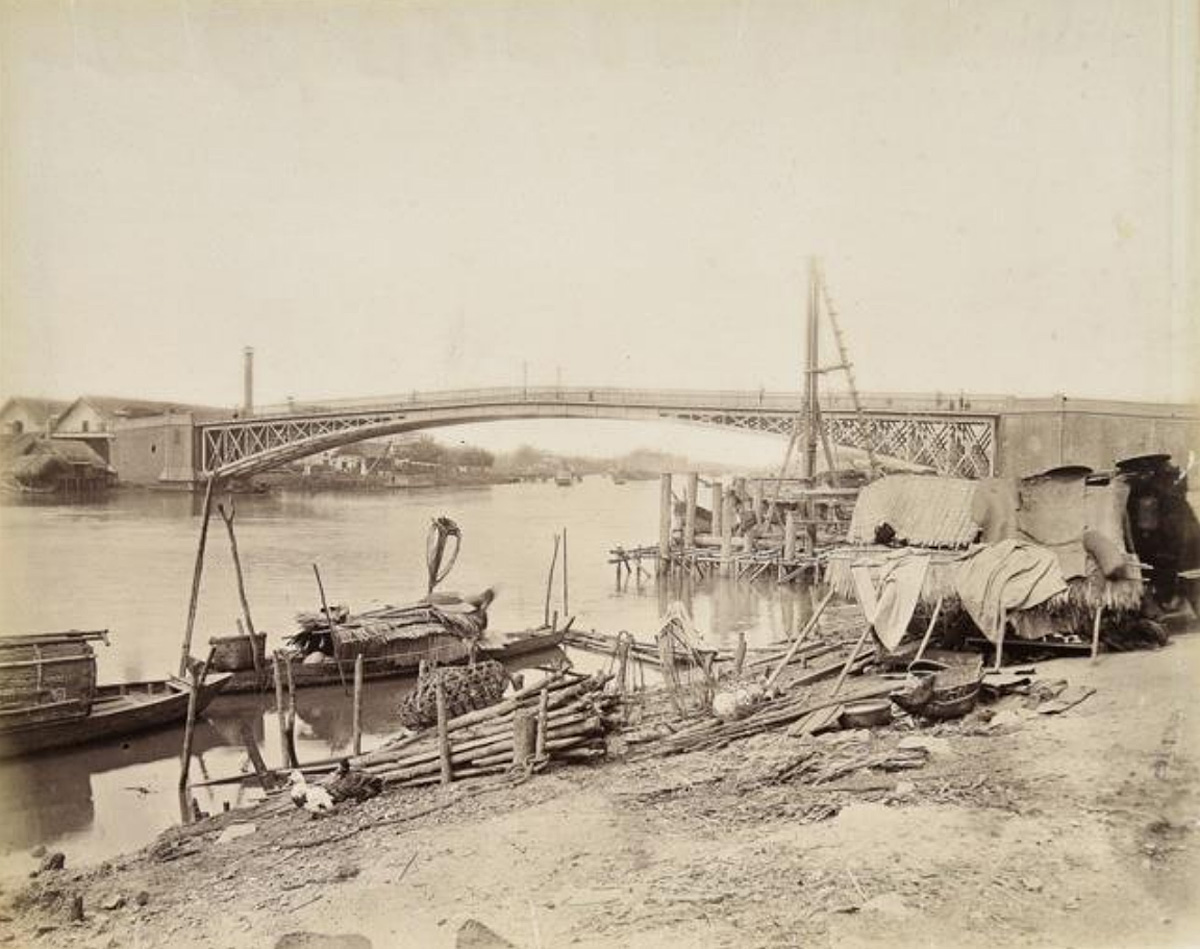
Saigon, 1890-1900 – Pont des Messageries maritimes: Saigon does have an authentic Établissements Eiffel structure – the single-arch former Pont des Messageries maritimes of 1882, thought to be the only one of its kind left in Asia – yet strangely this is rarely visited by tour groups
However, this fails to explain why in Saigon, where tour guides continue to promote the myth of an “Eiffel Post Office,” the single-arch former Pont des Messageries maritimes of 1882 – an authentic Établissements Eiffel structure thought to be the only one of its kind left in Asia – is rarely visited by tour groups.
For further details of the former Pont des Messageries maritimes, see www.historicvietnam.com/the-rainbow-bridge-a-true-eiffel-classic/
Marie-Alfred Foulhoux, true architect of the Saigon Post Office
No official documents or drawings bearing the name of the Saigon Post Office designer/builder have yet been found, but two contemporaneous newspaper accounts – Le Temps (Paris), 28 Février 1888, and L’Architecte constructeur: revue du monde architectural et artistique No 25, 15 Septembre 1891 – both clearly describe the work as being by the Chief Architect of Cochinchina, Marie-Alfred Foulhoux:
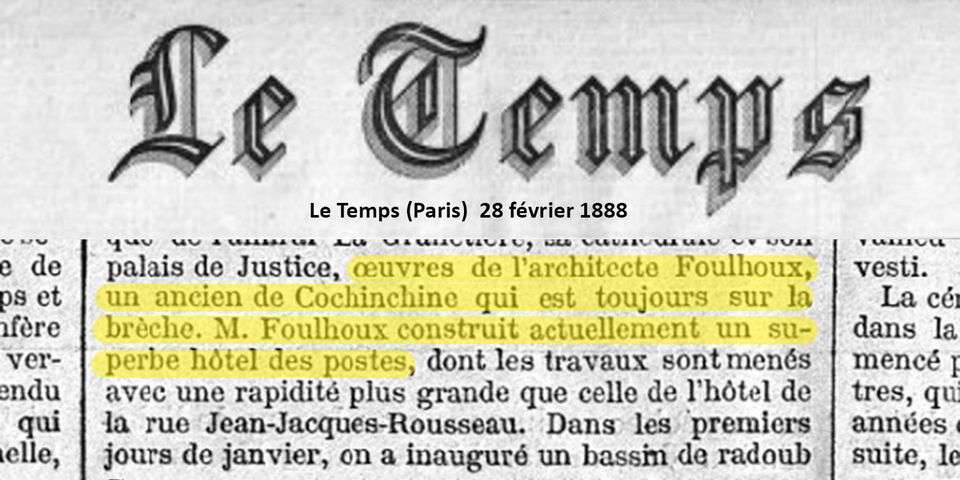
Le Temps (Paris), 28 Février 1888
“Saïgon a aussi ses monuments, son palais gouvernemental, datant de l’époque de l’amiral La Grandière; sa cathédrale et son palais de Justice, œuvres de l’architecte Foulhoux, un ancien de Cochinchine qui est toujours sur la brèche. M. Foulhoux construit actuellement un superbe hôtel des postes, dont les travaux sont menés avec une rapidité plus grande que celle de l’hôtel de la rue Jean-Jacques-Rousseau” (Saigon also has its monuments, its government palace, dating from the time of Admiral La Grandière; its cathedral and its courthouse, works of the architect Foulhoux, a former Cochinchinois who is always on the go. Foulhoux is currently building a superb post office, the work of which is being carried out with greater speed than that of the hotel on rue Jean-Jacques-Rousseau). Le Temps (Paris), 1888-02-28
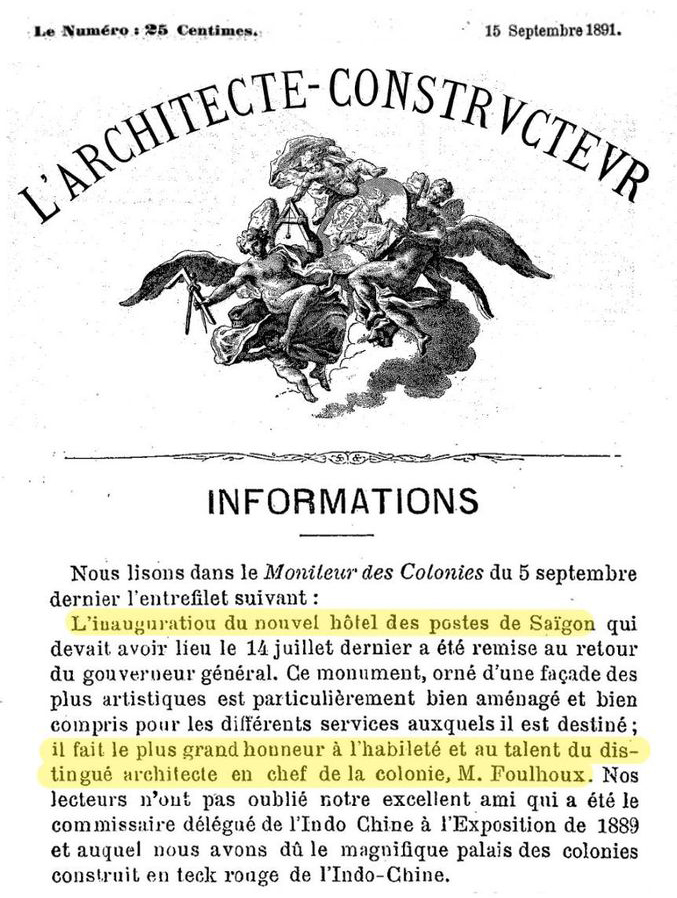
L’Architecte constructeur: revue du monde architectural et artistique No 25, 15 Septembre 1891
“L’inauguratiou du nouvel hôtel des postes de Saigon qui devait avoir lieu le 14 juillet dernier a été remise au retour du gouverneur général. Ce monument, orné d’une façade des plus artistiques est particulièrement bien aménagé et bien compris pour les différents services auxquels il est destiné; il fait le plus grand honneur à l’habileté et au talent du distingué architecte en chef delà colonie, M. Foulhoux. Nos lecteurs n’ont pas oublié notre excellent ami qui a été le commissaire délégué de l’Indo Chine à l’Exposition de 1889 et auquel nous avons dû le magnifique palais des colonies construit en teck rouge de l’Indo-Chine” (The inauguration of the new post office in Saigon which was to take place on 14 July, was postponed until the Governor General returns. This monument, adorned with a most artistic facade, is particularly well fitted out for the various services it is intended for; it does the greatest honour to the skill and talent of the distinguished chief architect of the colony, M Foulhoux. Our readers have not forgotten our excellent friend, who was the deputy commissioner of Indo China at the 1889 Exposition, and to whom we owe the magnificent colonial palace, built in red teak from Indo-China). L’Architecte constructeur: revue du monde architectural et artistique, Paris, 1891-09-15
Was Henri Vildieu involved?

The book Saïgon 1698-1998 Kiến Trúc/Architectures Quy Hoạch/Urbanisme (Nhà Xuất Bản Thành Phố Hồ Chí Minh), published in 1998, still offers one of the best overviews of Saigon’s historic built heritage
The excellent book Saïgon 1698-1998 Kiến Trúc/Architectures Quy Hoạch/Urbanisme (Nhà Xuất Bản Thành Phố Hồ Chí Minh), published in 1998, claimed that the Saigon Post Office was “construite sur les plans de l’architecte Vildieu, Chef du Service des Batiments civils du Tonkin, avec l’aide de Foulhoux” (constructed on the basis of plans by architect Vildieu, Head of Public Buildings in Tonkin, with the aid of Foulhoux.” This claim has since been reproduced widely in many other books and articles about Saigon.
However, there is no evidence to support the idea that Foulhoux, then a senior figure in the Cochinchina government, would have been an assistant to Vildieu, who during the same period was a relatively junior architect, nor indeed is there any evidence that Vildieu was involved in any way in the design or construction of the Saigon Post Office.
A quick search of the official Indochina government publications on Gallica shows that Marie-Alfred Foulhoux (1840-1892) arrived in Cochinchina in 1869 and became Chef du Service des Bâtiments civiles en Cochinchine in 1872. He is believed to have been appointed Architecte-en-chef in 1879.
“FOULHOUX ALFRED, architecte en chef de l’Indo-Chine (Nécrologie) – La Construction moderne lui a consacré la notice suivante due à M. Charles Lucas: Mercredi 20 janvier (1892), est décédé subitement à Saigon (Cochinchine), M. Foulhoux, architecte, qui depuis vingt-cinq années habitait cette colonie, et avait été, en 1872, après la démission de M. Monnier, nommé par le ministre de la Marine et des Colonies, chef de la section des bâtiments civils du service des travaux d’architecture de la Cochinchine. C’est en cette qualité que M. Foulhoux avait tracé le plan de la ce partie neuve de la ville de Saigon, et fait élever le palais du gouverneur général, ainsi que plusieurs autres édifices publics tant à Saïgon que dans les autres villes de l’Indo-Chine française” (FOULHOUX ALFRED, chief architect of Indo-China (Obituary) – La Construction moderne devoted the following notice to him by M Charles Lucas: On Wednesday 20 January (1892), M Foulhoux, architect, died suddenly in Saigon (Cochinchina). For 25 years he lived in this colony, and after the resignation of Mr. Monnier in 1872, he was appointed by the Minister of the Navy and the Colonies as head of the Civil Buildings section of the Architectural Works Service of Cochinchina. It was in this capacity that M Foulhoux drew up the plan of this new part of the city of Saigon, and had the palace of the Governor General erected, as well as several other public buildings both in Saigon and in the other cities of French Indo-China). Société des architectes de l’Anjou, Angers, 1892
Documents show that Foulhoux was also responsible for four other civic buildings in Saigon, so that the Saigon Post Office was in fact his last work:
– Secrétariat général du gouvernement (1881)
– Palais de Justice (1885)
– Hôtel des douanes (1887)
– Palais du Lieutenant-gouverneur de Cochinchine (1890)
– Hôtel des postes (1891)
Meanwhile, Auguste-Henri Vildieu (1847-1926) first entered service as an architect with the Indochina authorities in February 1885:
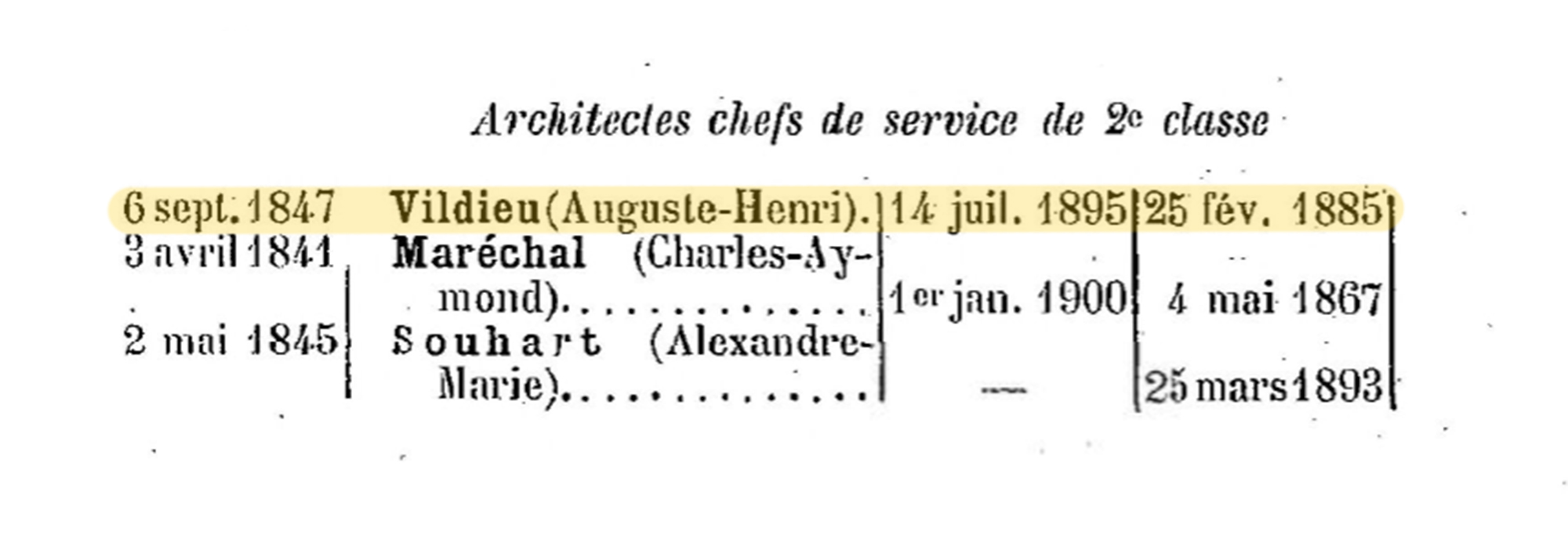
Auguste-Henri Vildieu (1847-1926) entered colonial service in Hà Nội in 1885 and became an architecte 2nd class in the Service des bâtiments civils in 1895
“Architectes chefs de service du 2e classe: Vildieu, Auguste-Henri; Date de naissance – 6 sept 1847; Date de la dernière nomination – 14 juil 1895; Date d’entrée dans l’administration locale – 25 fév 1885” (Vildieu, Auguste-Henri; Date of birth – 6 September 1847; Date of last nomination – 14 July 1895; Date of entrance into local administration – 25 February 1885). Annuaire général de l’Indo-Chine, Hanoi, 1902
Vildieu did not become Chef du service des bâtiments civils until 1895, three years after Foulhoux’s death:
“M Vildieu, architecte, chef du service des bâtiments civils, Président” (M Vildieu, architect, head of the civil buildings service, President). Bulletin officiel de l’Indochine française, Saïgon et Hanoï, 1895
He remained an “architecte-adjoint” (assistant architect) and “Architecte chef de service de 2e classe” (architect head of service 2nd class) until as late as July 1902, over a decade after Foulhoux’s death:
“Vildieu (Auguste-Henri), architect-adjoint” (Vildieu (Auguste-Henri), assistant architect). Les Tablettes coloniales: organe des possessions françaises d’Outre-mer, Paris, 1888-08-29
“Architectes chefs de service du 2e classe: Vildieu (Auguste-Henri); Date de naissance – 6 sept 1847; Date de la dernière nomination – 14 juil 1895; Date d’entrée dans l’administration locale – 25 fév 1885” (Vildieu (Auguste-Henri); Date of birth – 6 September 1847; Date of last nomination – 14 July 1895; Date of entrance into local administration – 25 February 1885). Annuaire général de l’Indo-Chine, Hanoi, 1902
Vildieu was finally promoted to “Architecte 1re classe” and Architecte-en-chef of the Travaux publics de l’Indochine on 19 July 1902:

Auguste-Henri Vildieu (1847-1926) became an architecte 1st classe and Architecte-en-chef in the Service des bâtiments civils in 1902; after his retirement in 1912 he was made Architecte-en-chef honoraire
“Par arrêté du Gouverneur général de l’Indo-Chine p. i., en date du 19 juillet 1902, rendu sur la proposition du Directeur général des Travaux publics: Sont promus dans le personnel des Travaux publics de l’Indo-Chine:
2° au grade d’architecte de 1re classe: M. Vildieu, Auguste, architecte de 2e classe” (By decree of the Acting Governor General of Indo-China, dated 19 July 1902, rendered on the proposal of the Director-General of Public Works: The following staff of Public Works of Indo-China are promoted to the grade of 1st class architect: M. Vildieu, Auguste, 2nd class architect). Bulletin officiel de l’Indochine française, Saïgon et Hanoï, 1902-07
“Vildieu, Auguste: Date de la nomination au grade de Architecte-principal, chef du service: 19 juillet 1902” (Vildieu, Auguste: Date of appointment to the rank of Principal architect, head of the service: 19 July 1902). Annuaire général de l’Indo-Chine, Hanoi, 1925
The works attributed directly to Vildieu are all situated in Hà Nội, and all of them date from the late 1890s to 1906, some time after Foulhoux’s death:
– Maison centrale (1899)
– Gare de Hanoi (1902)
– Travaux publics de l’Indochine (1902)
– Hôtel des postes (1905)
– Palais de Justice (1906)
– Mairie de Hanoi (1906)
This makes it all the more unlikely that Vildieu could have been the principal architect of a major building in Saigon which was completed nearly a decade earlier, when he was still an assistant architect.
When Vildieu retired in 1912, he was made Architecte-en-chef honoraire (Honorary Architect in chief) of the Travaux publics de l’Indochine:
“Par arrêtés du Gouverneur général de l’Indochine du 12 décembre 1912: Sont nommés, à compter du jour de leur radiation des cadres de l’activité, professeurs stagiaires dans le personnel français de l’Enseignement dans les pays de Protectorat de l’Indochine, pour servir en Annam: 1° Architecte en chef honoraire des Travaux publics de l’Indochine: M. Vildieu (Auguste-Henri), architecte principal chef de service” (By decrees of the Governor General of Indochina of 12 December 1912: The following are appointed, from the day of their retirement, as trainee teachers in the French teaching staff in the countries of the Protectorate of Indochina, to serve in Annam: 1° Honorary Chief Architect of Public Works of Indochina: M. Vildieu (Auguste-Henri), chief architect, head of department). Bulletin officiel de l’Indochine française, Saïgon et Hanoï, 1912
The above timeline shows clearly that, at the time the supposed Saigon Post Office collaboration took place, Foulhoux was Chief Architect of Cochinchina, while Vildieu was still a class 2 architecte-adjoint. Vildieu would only only become Foulhoux’s equal long after the latter’s death, being promoted to Chef du service des bâtiments civils en Annam et au Tonkin in 1893, and finally to class 1 architecte principal in 1902.
Thus, at the time of the Saigon Post Office project, Chief Architect Foulhoux was very clearly the senior of the two men, in terms of both age and authority, so that the idea of him being Vildieu’s assistant is very unlikely indeed.
Foulhoux and Vildieu did in fact work together on the construction of palaces for the Universal Exposition of 1889 in Paris, and Vildieu also subsequently worked in Cochinchina during the period 1892-1893:
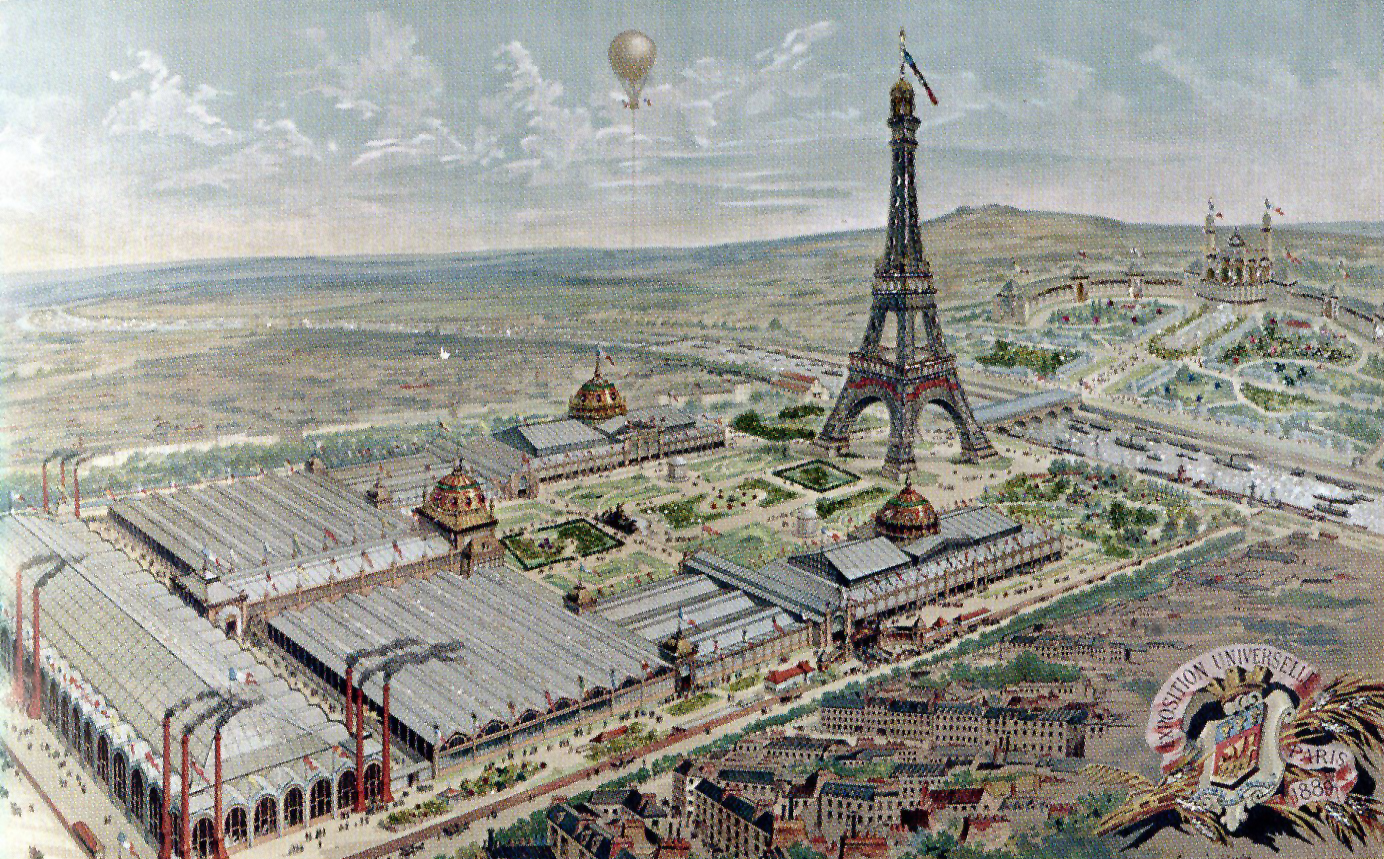
Vue générale de l’exposition universelle de 1889
The Universal Exposition of 1889 project was organised “sous la direction de M. Louis Menrique, commissaire spécial de l’exposition coloniale, par MM. Sauvestre, architecte en chef des colonies françaises; Foulhoux, architecte en chef de l’Indo-Chine; Fabre, architecte du Cambodge; Vildieu, architecte du Tonkin; de Brossard, architecte adjoint, et Martin, inspecteur des bâtiments” (under the direction of M Louis Henrique, commissaire spécial de l’exposition coloniale, by Messrs Sauvestre, architecte-en-chef des colonies françaises, Foulhoux, architecte-en-chef de l’Indochine, Fabre, architecte du Cambodge, Vildieu, architecte du Tonkin, Brossard, architecte-adjoint, and Martin, inspector of buildings). Alfred Picard, Exposition universelle internationale de 1889 à Paris: rapport général par M. Alfred Picard. Travaux de l’Exposition, Paris, 1891-1892
However, all of the documents describing this collaboration in Paris make it clear that Foulhoux was in charge, and refer to Vildieu (and his colleague Fabre) as “architecte-adjoint” – in other words, Vildieu would have been Foulhoux’s assistant, not the other way round.
“Ces palais ont été construits par M. Foulhoux, architecte du gouvernement de la Cochinchine, et par MM. Fabre et Vildieu, ses adjoints, avec un respect de la vérité locale, une sagacité dans le choix des types, un amour des arts qu’ils voulaient reproduire et une sincérité de sentiment qui en font les plus authentiques des curiosités et les plus intéressantes des merveilles” (These palaces were built by M Foulhoux, architect of the government of Cochinchina, and by Messrs Fabre and Vildieu, his assistants, with respect for local truth, sagacity in the choice of building types, a love of the arts that they wanted to reproduce, and a sincerity of sentiment which makes them the most authentic of curiosities and the most interesting of wonders). Le Temps (Paris), 1889-05-04
“MM. Foulhoux, architecte en chef, et Vildieu, architecte adjoint, ont habilement dirigé les études et travaux de cette construction et de son aménagement intérieur.” (Messrs Foulhoux, chief architect, and Vildieu, deputy architect, skilfully directed the studies and works of this construction and its interior fittings). Le Génie civil: revue générale des industries françaises et étrangères, Paris, 1889-03-09
After this collaboration, Vildieu could also be found in 1892-1893 working in Saigon office as a Deputy Architect in the Service of Civic monuments:
COCHINCHINE FRANCAISE – SAIGON – Service des travaux publics: Rampant, architecte, chef du service; Foulhoux, architecte, chef de la section des bâtiments civils; Thil architecte, sous-inspecteur des bâtiments civils; Kerrien, chef de la section des ponts et chaussées; Vildieu, architecte adjoint au service des monuments civils (COCHINCHINE FRANCAISE – SAIGON – Public works service: Rampant, architect, head of the service; Foulhoux, architect, head of the civic buildings section; Thil, architect, sub-inspector of civic buildings; Kerrien, head of the bridges and roads section; Vildieu, assistant architect to the civic monuments service). Indicateur de la propriété foncière dans Paris et le département de la Seine, Paris, 1892
Foulhoux died suddenly on 20 January 1892, while Vildieu was still working in Saigon.
When Vildieu was appointed Chef du service des Bâtiments civils en Annam et au Tonkin on 15 June 1893, he ceased to be a member of staff of Bâtiments civiles de la Cochinchine:
“15 juin 1893. – Gouverneur général de l’Indo-Chine: M. Vildieu (Auguste-Henri), architecte adjoint, est nommé architecte, Chef du service des bâtiments civils en Annam et au Tonkin, et cessera à partir de la date du présent arrêté de faire partie du personnel du service des bâtiments civils de la Cochinchine” (June 15, 1893 – Governor General of Indo-China: M Vildieu (Auguste-Henri), deputy architect, is appointed architect, Head of the civil buildings service in Annam and Tonkin, and will cease from the date of present decree to be part of the staff of the civil buildings service of Cochinchina). Bulletin officiel de l’Indochine française, Saïgon et Hanoï, 1893-06
There is no evidence of any other architectural collaboration between the two men before Foulhoux’s death, apart from the 1889 Exposition universelle internationale project. As such, Vildieu’s involvement in the design and/or construction of Saigon Post Office cannot be substantiated.
The author has consulted three of the editors of the above-mentioned publication, Saïgon 1698-1998 Kiến Trúc/Architectures Quy Hoạch/Urbanisme – Dr Natasha Pairaudeau, Dr François Tainturier and Dr Philippe Peycam – about the claim that Vildieu was chief architect of the Saigon Post Office, but understandably, since the work was produced over 20 years ago, none of them can recall the basis on which their book cited Vildieu as the chief architect of Saigon Post Office and Foulhoux as his assistant.
However, they all mention that back in 1998 their research for the book would not have included French archival material, and that in the absence (at that time) of internet access to online records, that research would have been heavily reliant on materials held in Saigon, in the then Municipal Library and in the ex-National Library.
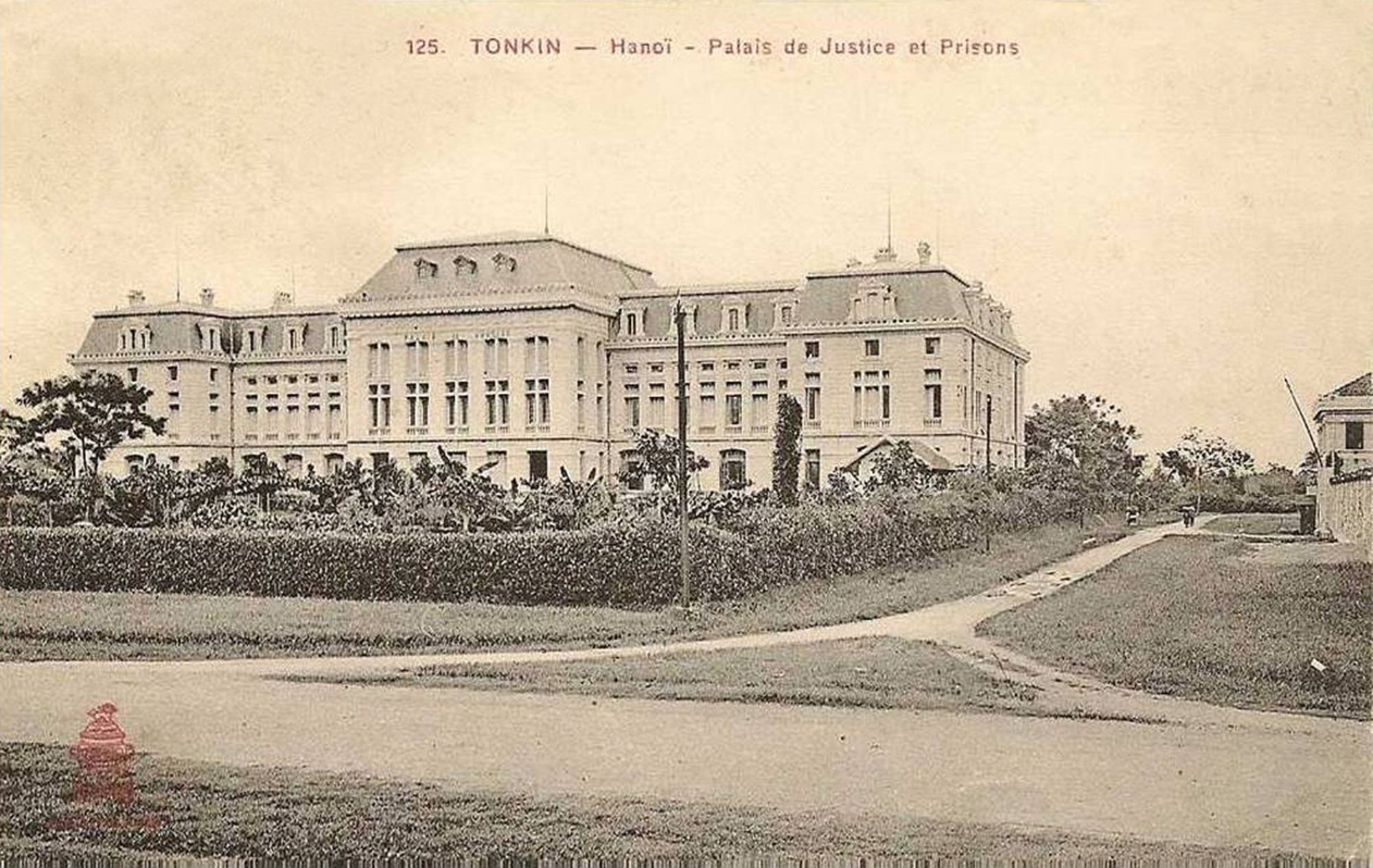
Tonkin – Hà Nội – Palais de Justice et Prisons, a work by Auguste-Henri Vildieu (1847-1926)
Since no other collaboration between Foulhoux and Vildieu can be documented, the editors of Saïgon 1698-1998 Kiến Trúc/Architectures Quy Hoạch/Urbanisme accept that their original claim about Vildieu’s involvement was incorrect, and that the reports in Le Temps (Paris) and L’Architecte-Constructeur citing Foulhoux, Architecte-en-chef in Cochinchine, as the sole architect of Saigon Post Office, not available to them in 1998, are likely to be accurate.
Setting the record straight
Nowadays, Việt Nam is no longer simply an adventure destination. It already attracts significant numbers of cultural tourists, including older, wealthier visitors who stay longer, take part in more cultural activities and spend more money. Such visitors expect and deserve to be given accurate historical information about Vietnamese heritage, rather than myths.
The continued propagation of erroneous information regarding the Long Biên Bridge in Hà Nội, the Trường Tiền Bridge in Huế and the Saigon Post Office should be a real concern to all those involved in the preservation and promotion of Vietnamese heritage, and it is hoped that this short summary of the relevant historical data will help to resolve any outstanding uncertainty on the subject
Thanks are due to Emmanuel Cerise, Dr Natasha Pairaudeau, Dr François Tainturier and Dr Philippe Peycam for their assistance in the preparation of this article
Tim Doling is the author of the guidebooks Exploring Huế (Nhà Xuất Bản Thế Giới, Hà Nội, 2018), Exploring Saigon-Chợ Lớn (Nhà Xuất Bản Thế Giới, Hà Nội, 2019) and Exploring Quảng Nam (Nhà Xuất Bản Thế Giới, Hà Nội, 2020) and The Railways and Tramways of Việt Nam (White Lotus Press, 2012)
A full index of all Tim’s blog articles since November 2013 is now available here.

